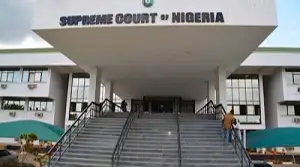The Lagos State Government has officially identified Ikeja, Lagos Island, and Lekki as the three areas with the highest incidence of crime in the state, according to a recent announcement by the Attorney-General and Commissioner for Justice.
Mr. Lawal Pedro, SAN, revealed this information during a ministerial press briefing held in Alausa, Ikeja, marking the second anniversary of Governor Babajide Sanwo-Olu's second term in office. The data was compiled through the Lagos State Criminal Information System (LCIS).
"Between January 2024 and May 2025, the top three crime locations in Lagos State were Ikeja, Lagos Island, and Lekki," the Attorney-General stated, highlighting a concerning concentration of criminal activities in these commercial and residential hubs.
Correctional Facilities Under Pressure
Pedro further disclosed alarming statistics about the state's criminal justice system. According to the LCIS, a total of 74,962 criminal cases and inmates have been documented across Lagos State from 2018 to May 2025.
The Attorney-General expressed significant concern about the burden on the state's correctional infrastructure, which is currently severely overstretched. Lagos correctional facilities are operating at 106 percent over capacity, with a total inmate population of 9,096 as of May 2025, substantially exceeding their designed capacity.
Digitizing Criminal Justice System
In his briefing, Pedro emphasized the importance of the Lagos State Criminal Information System, describing it as a transformative initiative designed to digitize and streamline criminal justice processes. The platform aims to enhance efficiency and support data-driven policy-making in the state's approach to crime management.
The identification of these crime hotspots comes at a critical time when Lagos, Nigeria's commercial capital, continues to grapple with various security challenges amid rapid urbanization and population growth.
The Lagos State Government is expected to use this data to inform targeted security interventions and resource allocation in its ongoing efforts to improve public safety across the metropolis.













